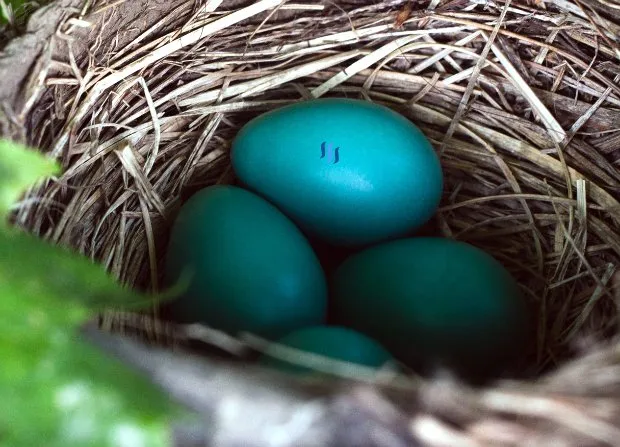
I thought I would start off a tag series #ifiwereadev because there are so many good ideas for Steemit coming from the community, however at the moment they are loosely placed under the (very) broad tag of #steemit. Hopefully we can add to this tag and that will give the Steemit devs a handle on what features are popular, and perhaps which ones they should be working on.
The idea is simply to use voting Easter eggs in order to encourage long-term voting on articles; below I will lay out my reasons for this proposed change, and ways I think it could work.
I have a very basic understanding of coding, so in some cases I may be proposing things that are not possible or incredibly difficult to carry out. So I guess I'm saying that this should be treated as a style guide with no programming knowledge behind it.
The Problem

A large majority of votes on most Steemit content comes in the first 24 hours. Even though the views are spread out over the potential 7 day payout, the votes do not tally.
So curators are only voting within a time period that is most likely to produce worthwhile rewards.
The Objective
To encourage curators to vote for content beyond the first 24 hours, whilst not taking away the incentive to find and curate content early on.
The Case For Long Term Rewards
I have been quite vocal in the past around the whole issue of the rewards system on Steemit, mainly because I believe that rewards are a big part of what makes Steemit unique, and I feel like it should be capitalised on to the absolute maximum.
One aspect of the rewards in particular that has interested me, is the length of the payout time on any given article.
I was a very early adopter to Steemit, I came around a month after its inception, meaning that there were no payouts scheduled to happen for a couple of months after I joined.
Back then if you wrote an article, people could vote on it as and when they pleased, as long as it was before July 4th when the first payouts were due to happen. In that time period, I, and a lot of others were kind of lulled into a false paradigm.
By that I mean, we felt that our articles would always have time to gain traction and therefore garner votes. However that illusion was shattered for anyone posting an article on July 4th, only to see it payout on July 5th, the 24 hour rule took me by surprise and also disappointed me.
My argument was always that great content is great content, whilst recognising of course there is time sensitive content, like news and financial reports. However there is plenty more which does not carry the same constraints with it; in fact I made the case on more than one occasion that in the past I have found value in articles up to 4 or 5 years after they were originally created.
As the debate raged on, one of the hardforks we had (I believe it was 12) made an attempt at addressing the "problem" by setting 2 payout windows, one with 24 hours and one for 30 days.
However this didn't address the problem, nor it seemed did the more recent change to a standard 7 day payout.
The Solution
I believe a good answer to the problem would be to have a voting easter egg that was triggered algorithmically, in a semi-random way.
So imagine you have just created the most awesome post on your favourite subject. You have put the work in and it shows, you get around 200 votes and 152 views in the first 24 hours, and in 7 days time you have 206 votes.
In the proposed system you would still get whatever payout you were due, so no change there. The difference comes weeks, or even months down the line when you suddenly get another payout.
####Why?
Well because the system recognises that loads of people have been getting extra value from your article, and has decided to reward them, and you for enhancing Steemit.
How It Works Explored
Views: The problem with basing the algorithm on views, is that Steemit becomes susceptible to sybill attacks. Whereby an individual or individuals, program software bots to view their articles hundreds of times a day. Even if you designed the algo so that it could recognise "sticky" traffic, it wouldn't necessarily alleviate the threat.
Votes: As above, trying to base the algorithm on votes will still throw up the same problems, in that people will just create lots of voting bots in order to keep cashing in.
Time: So why not just go back to the old way of keeping voting open for 30, 60, 90 days or even more? Apart from this being a huge strain on the blockchain, it doesn't really solve the problem. Because if you are giving extra rewards for later voting, we will have a scenario whereby nobody votes on early content.
Combo!: The answer is to combine all three elements, views-votes-time, with an extra element (x) which remains secret and/or random.
Let's go back to your original amazing article that had 206 votes after 7 days, for arguments sake, let's say it made 50 SBD and 50 SP.
So let's see how a views-votes-time-x algorithm might effect your article's rewards and what that might look like.

Imagine after another 21 days the views for that article go from 152 to 1000, for some reason it has caught fire off-Steem, and is being shared on more of the traditional social media sites.
Then let's fast forward another 30 days, and the views are now at 10,000, in fact your article alone has created 200 individual sign-ups for Steemit. In that scenario you would be justified in thinking that you had brought a hell of a lot of value to the platform.
The views-votes-time-x algorithm, takes into account (sticky) views and votes gained over a period of time, and then applies x, which is the secret part of the algo. So then for limited times only a vote or a small amount of votes are worth say, 5 SBD/SP.
In other words, if you come across an article that is a couple of months old that you find valuable and you give that article a 100% upvote, you receive 5 Steem Dollars and/or 5 Steem Power, and your vote is worth a couple of bucks to the content creator.
The reason you wouldn't wait till a popular article is old before you voted on it, is because you could have no way of knowing that your vote is the one, or ones, to be heavily rewarded in this way. This is the nature of the Easter egg, a nice hidden bonus that you stumble upon, because you've taken the trouble to explore the deeper layers of the platform.
So now we have a scenario whereby you still vote on early content, because there is no change there, however now you are looking for older content that interests you, in the hope of giving out an Easter egg vote.
Benefits
Content creators are rewarded long after creation.
Curators are rewarded for "deep-level" creation, thus incentivising them to stay on the platform.
Google rates more Steemit articles as relevant because it sees old content being viewed and shared, thus making Steemit more visible and popular.
Philosophy

I believe this to be the right thing to do because Steemit could become a source of residual income for great content creators. If you write a book, you may not sell any straight away, however one day it could catch on and you start selling, or you sell lots initially and don't for years to come. Either way, the later sales, which represent value received, still net you an income.
In the proposed voting model; how much future residual income you earn will have a direct correlation on the value received by the people rewarding you.
Thoughts
What do you guys think? Is this even a problem in your eyes? If so does my solution go some way to solving it; or is there more that can be done? Do you get lots of late votes on your articles, would you like later rewards? As ever, let me know below!
Upvote and resteem if you agree and for any ideas of your own post with the title and tag; If I Were A Dev.
Steem On!